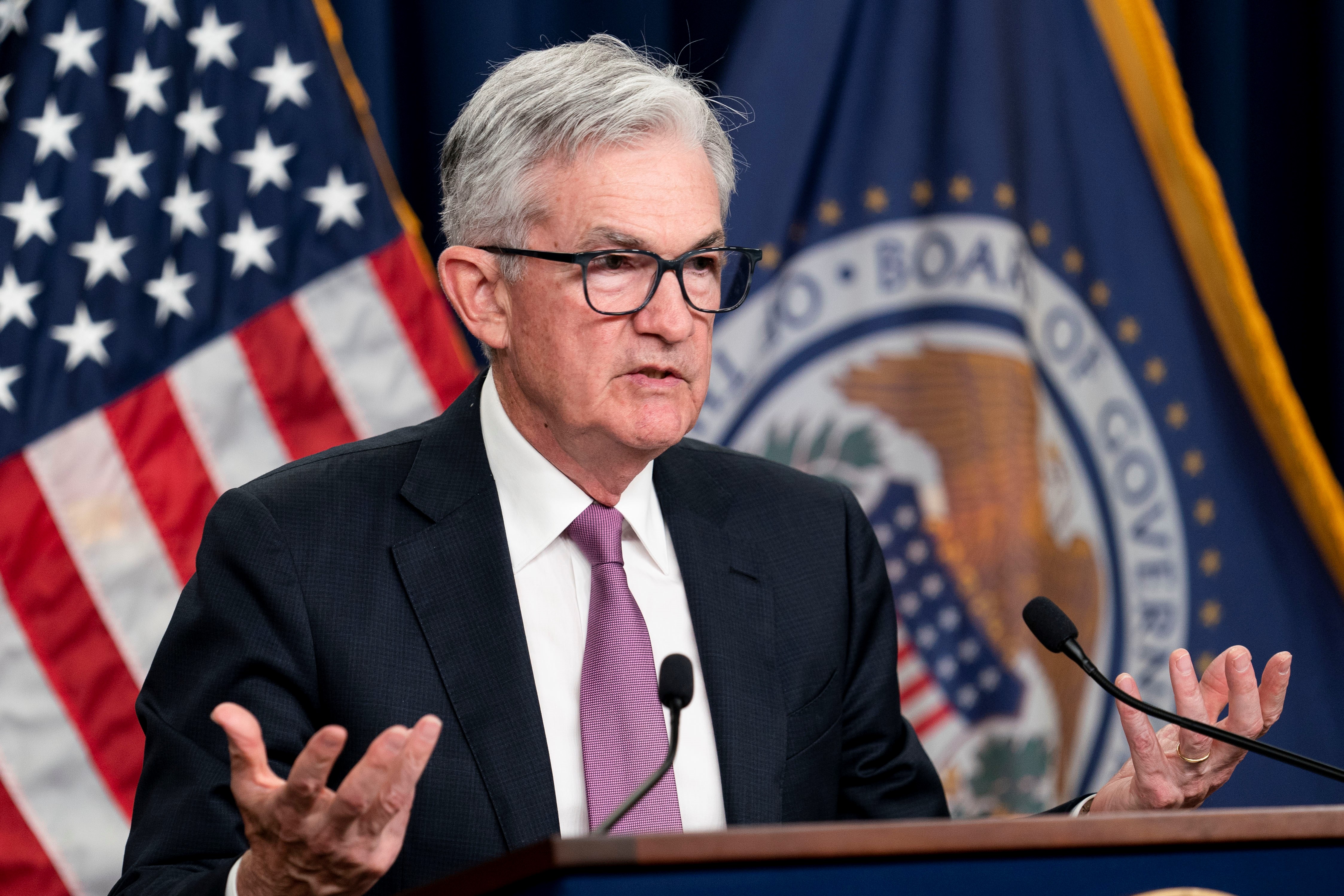Fed expected to keep interest rates higher for longer amid stubborn inflation
Sticky inflation likely to keep the Fed on hold at May meeting
Fed isn't getting data that shows they need to cut, analyst says
CAZ Investments Chief Investment Officer Christopher Zook weighs in on the Fed's handling of the economy as rate cut expectations plummet, Japan's Yen and tech earnings.
Just a few months ago, Wall Street was confident that May would mark the beginning of a barrage of interest rate cuts by the Federal Reserve.
But a string of hotter-than-expected inflation reports at the beginning of the year has poured cold water on those expectations, and the debate has gradually shifted from how many times the Fed will cut rates this year to whether it will trim them at all.
Fed officials are widely expected to hold interest rates steady at a range of 5.25% to 5.5%, the highest level in 22 years, and make only minor changes to their policy statement at the conclusion of their two-day meeting on Wednesday.
"Despite evidence that economic growth is beginning to slow, the Federal Reserve isn’t as close to cutting interest rates as they thought they might be at their last meeting in March," said Greg McBride, chief financial analyst at Bankrate. "Inflation has continued to run hot and there is no compelling need for the Fed to cut interest rates until they’re comfortable with where inflation is headed."
JAMIE DIMON WARNS INFLATION, INTEREST RATES MAY REMAIN ELEVATED

Federal Reserve Chairman Jerome Powell speaks during a news conference following a Federal Open Market Committee meeting in Washington, D.C., on March 22, 2023. (Al Drago/Bloomberg via Getty Images / Getty Images)
However, investors are even more laser-focused on what Fed Chair Jerome Powell may signal comes next for the central bank during his post-meeting press conference.
Updated quarterly projections laid out after the Fed's March meeting show that a majority of Federal Open Market Committee officials expect rates to fall to 4.6% by the end of 2024, suggesting that there will be at least three quarter-point rate cuts this year.
Since then, many central bank officials — including Powell — have cast doubts on those projections, following worse-than-expected inflation reports in January, February and March. Powell said last week that policymakers will "maintain the current level of restriction for as long as needed" until price pressures are tamed, opening the door to a higher-for-longer stance.
"The recent data have clearly not given us greater confidence, and instead indicate that it’s likely to take longer than expected to achieve that confidence," he said. "That said, we think policy is well positioned to handle the risks that we face."
INFLATION ACCELERATES MORE THAN EXPECTED IN MARCH AS HIGH PRICES PERSIST
Experts say they will be closely watching Powell's press conference to see how he responds to questions about possible rate hikes, and whether he reiterates that all policymakers continue to believe that policy is likely at its peak for this tightening cycle and that reductions will be "appropriate" at some point this year.
"While the contrarian view of Fed rate hikes has become trendy, we continue to stress that the bar for rate hikes is elevated," said EY chief economist Gregory Daco.
Policymakers raised interest rates sharply in 2022 and 2023 to the highest level since the 1980s in a bid to slow the economy and cool inflation. Fed officials are now grappling with when they should take their foot off the brake.
GET FOX BUSINESS ON THE GO BY CLICKING HERE
Most investors now expect the Fed to begin cutting rates in September and are penciling in just two reductions this year — a dramatic shift from the start of the year, when they anticipated six rate cuts beginning as soon as March.
Hiking federal rates tends to create higher interest rates on consumer and business loans, which then slows the economy by forcing employers to cut back on spending. Higher rates have helped push the average rate on 30-year mortgages above 7% for the first time in years. Borrowing costs for everything from home equity lines of credit to auto loans and credit cards have also spiked.
